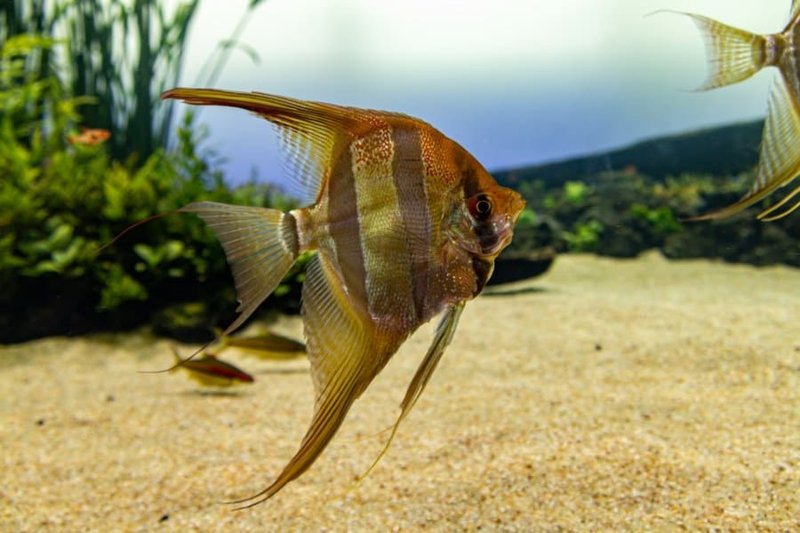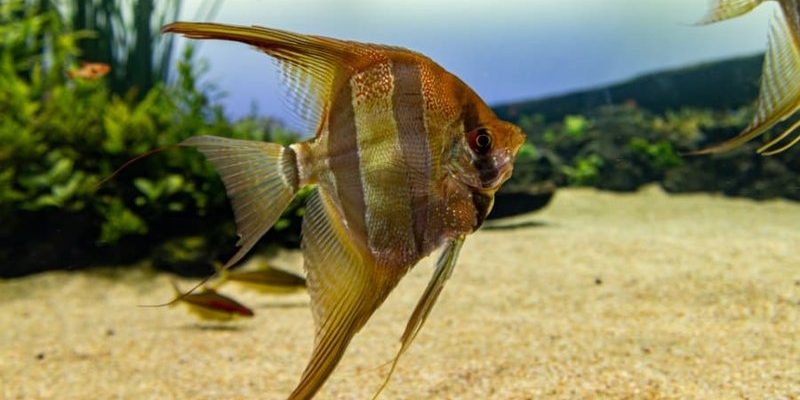
Setting up a home for marine angelfish is like preparing a cozy nook in your house. You wouldn’t want to skimp on space, temperature control, or even the ambiance of the environment. Each of these elements plays a significant role in ensuring the health and happiness of your fish. So, let me guide you through what you need to know to create the perfect habitat for your stunning marine angelfish.
Understanding Tank Size for Marine Angelfish
Choosing the right tank size is more than just figuring out how much water you need. Think of it as giving your angelfish a luxury apartment rather than a cramped studio. Marine angelfish, especially the larger species, require space to swim and explore. A general guideline is a minimum of 50 gallons for smaller angelfish and up to 125 gallons for larger species.
Why does size matter so much? Larger tanks help maintain stable water parameters, such as temperature and salinity, since there’s more water volume to absorb changes. Plus, your fish will have room to establish territories and reduce territorial aggression, which can be a common issue in smaller tanks.
If you’re just starting out, you might feel overwhelmed by the thought of a big tank. But consider this: a well-planned larger tank can be more forgiving when it comes to water quality. So, investing in a bigger tank might save you headaches down the road.
Salinity Levels: What Your Angelfish Need
Let’s dive into salinity. Think of salinity as the balance of salt in your aquarium water, similar to how a perfectly brewed cup of coffee requires the right amount of sugar. Marine angelfish thrive in salinity levels between 1.020 – 1.025 specific gravity. This means that the saltiness of the water mimics their natural ocean environment.
Maintaining the right salinity involves regular testing and adjustments. You can use a hydrometer or a more advanced refractometer to measure this. Here’s the thing: fluctuations can stress your fish, leading to health issues. If the salinity drops too low, your angelfish might struggle with osmoregulation, which is their ability to balance water and salts. A good rule of thumb is to monitor your tank’s salinity weekly, especially in the early stages of your aquarium’s life.
If you’re unsure how to adjust salinity, you can add marine salt mix gradually when topping off evaporated water. Just remember: slow and steady wins the race when it comes to making changes in your tank.
The Ideal Temperature Range for Angelfish
Temperature is another critical factor in keeping your marine angelfish happy and healthy. These fish prefer a cozy temperature range of about 75°F to 82°F (24°C to 28°C). Maintaining a consistent temperature is essential, as sudden changes can lead to stress and illness.
Think of your aquarium heater as a comfy blanket. If it’s too cold, your fish might become lethargic and more susceptible to diseases. On the flip side, if the water is too hot, it can lead to oxygen depletion, which isn’t great for any aquatic life.
To keep your water temperature stable, invest in a reliable aquarium heater with a good thermostat. It’s also wise to have a thermometer visible in your tank. This way, you can easily keep an eye on the temperature and make adjustments if needed.
Filtration: Keeping Water Clean and Clear
Alongside size, salinity, and temperature, filtration plays a critical role in creating a healthy environment for your marine angelfish. A good filtration system helps remove harmful toxins and waste, ensuring the water remains clean.
When selecting a filter, aim for one rated for at least double the volume of your tank. For example, if you have a 50-gallon tank, look for a filter that can handle 100 gallons. This extra capacity helps provide better water quality and circulation.
Also, consider a filter with both mechanical and biological filtration options. Mechanical filtration will capture larger debris, while biological filtration supports beneficial bacteria that break down harmful substances. A well-maintained filter means your fish can enjoy a clearer, healthier habitat.
Decor and Setup: Creating a Natural Environment
To make your marine angelfish feel at home, it’s essential to recreate their natural habitat. Think of it as decorating a room; you want it to be both functional and visually appealing. Decor items like live rock, corals, and hiding spots not only provide visual interest but also serve as territories for the fish.
Angelfish tend to establish territories, so having plenty of space and structures allows them to feel secure. Ensure that the decorations have smooth edges to prevent injuries and that there are ample hiding spots for them to retreat when feeling stressed.
You might also want to consider tank mates. Some fish can be too aggressive or territorial, especially to a new angelfish. Research compatible species that suit the temperamental nature of angelfish, as harmony in your aquatic community is key to success.
Regular Maintenance: A Key to Success
Finally, establishing a routine for maintenance can’t be overlooked. Taking care of your tank is like maintaining a garden; regular attention ensures it thrives. Schedule water changes every 1–2 weeks, replacing about 10-20% of the water each time. This practice helps keep salinity and temperature stable while removing toxins.
Don’t forget to test your water parameters regularly—pH, ammonia, nitrites, and nitrates should be on your checklist. Keeping these levels in check will set the foundation for a healthy environment for your marine angelfish.
Here’s a little tip: If you notice any sudden changes, it’s worth investigating. Preemptive care can save you from bigger issues down the line.
Setting up a tank for marine angelfish involves more than just plopping them into water. By understanding the right tank size, salinity, temperature, and other essential factors, you create a thriving environment that allows these beautiful fish to flourish. With a bit of planning and regular maintenance, you’ll be rewarding yourself with a stunning aquatic display and happy, healthy fish. So, take your time, do your research, and enjoy the process of creating a beautiful home for your marine angelfish!

